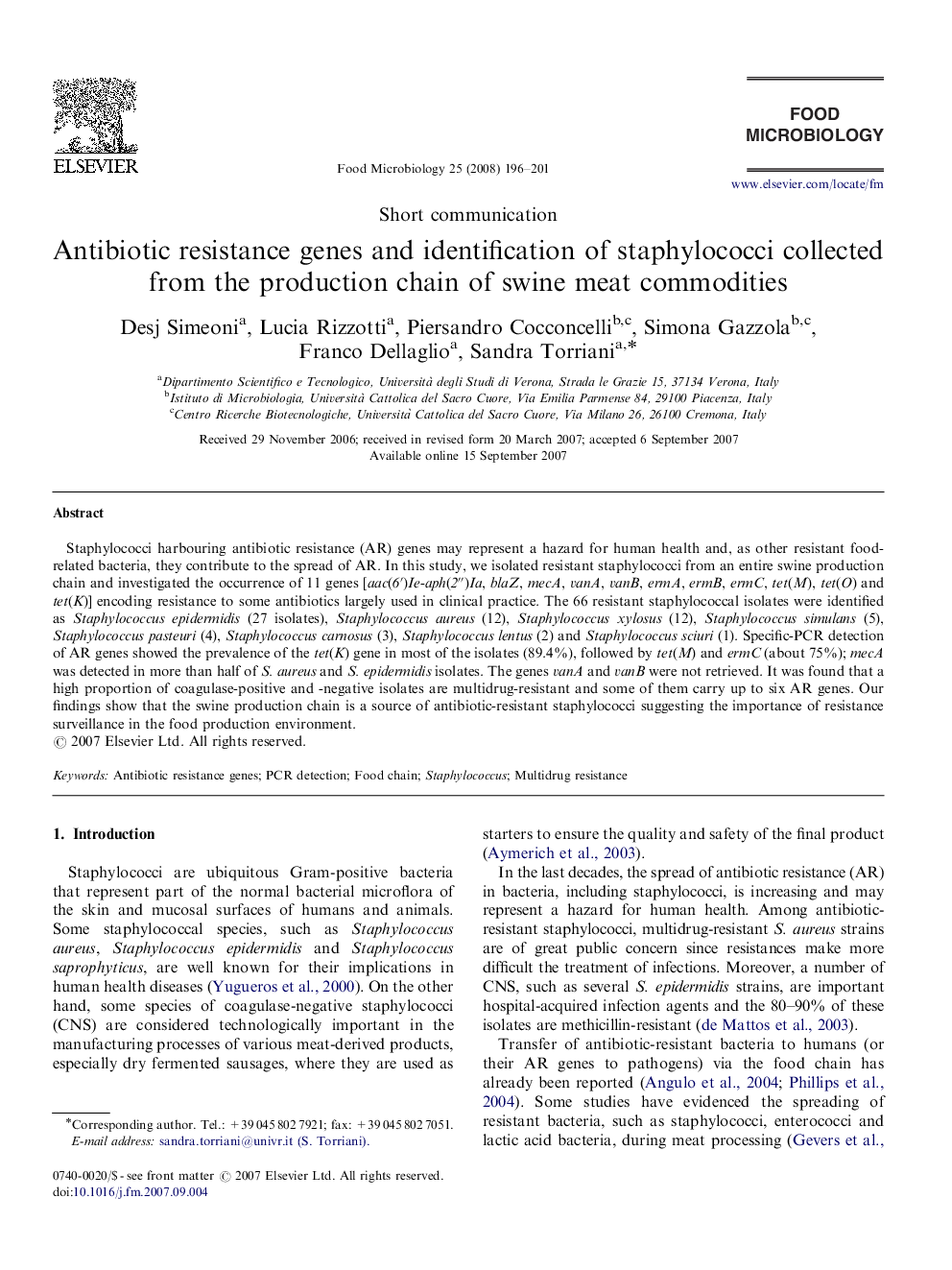| Article ID | Journal | Published Year | Pages | File Type |
|---|---|---|---|---|
| 4363996 | Food Microbiology | 2008 | 6 Pages |
Staphylococci harbouring antibiotic resistance (AR) genes may represent a hazard for human health and, as other resistant food-related bacteria, they contribute to the spread of AR. In this study, we isolated resistant staphylococci from an entire swine production chain and investigated the occurrence of 11 genes [aac(6′)Ie-aph(2″)Ia, blaZ, mecA, vanA, vanB, ermA, ermB, ermC, tet(M), tet(O) and tet(K)] encoding resistance to some antibiotics largely used in clinical practice. The 66 resistant staphylococcal isolates were identified as Staphylococcus epidermidis (27 isolates), Staphylococcus aureus (12), Staphylococcus xylosus (12), Staphylococcus simulans (5), Staphylococcus pasteuri (4), Staphylococcus carnosus (3), Staphylococcus lentus (2) and Staphylococcus sciuri (1). Specific-PCR detection of AR genes showed the prevalence of the tet(K) gene in most of the isolates (89.4%), followed by tet(M) and ermC (about 75%); mecA was detected in more than half of S. aureus and S. epidermidis isolates. The genes vanA and vanB were not retrieved. It was found that a high proportion of coagulase-positive and -negative isolates are multidrug-resistant and some of them carry up to six AR genes. Our findings show that the swine production chain is a source of antibiotic-resistant staphylococci suggesting the importance of resistance surveillance in the food production environment.
